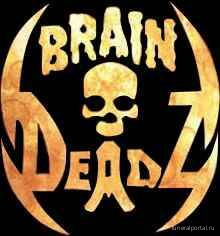Populists offer a seductive — and reductive — picture of the death penalty. But it’s a poor substitute for finding a creative solution to society’s problems
CHRIS ROPER
As he gracelessly exits his tenure as the clown-in-chief presiding over the precipitous decline of the American empire, Donald Trump’s last hurrah includes the execution of 13 Americans over the past six months.
For perspective, before Trump’s killing spree, the federal government had executed only three people since 1963.
Trump’s 13 includes the only woman on what we now glibly refer to as death row, Lisa Montgomery — the first woman to be executed by the federal government in the past 70 years.
Literature on this is sparse, but as far as I can ascertain, as with the Vietnam War-era euphemism "collateral damage", we can thank our bloodthirsty US friends for the introduction of the term "death row" into the popular lexicon.
A search on Ngram Viewer (the Google search engine that charts the frequency of words or phrases in sources printed between 1500 and 2019) shows usage of the term starting to register from the late 1920s, then spiking.
Again, my research hasn’t been rigorous, but it looks as if the term was officially coined for the incarceration and execution of Giuseppe Zangara, who in February 1933 killed a bystander and injured several others while attempting to assassinate Franklin D Roosevelt, at the time the president-elect.
Under Florida law, a convicted murderer couldn’t share a cell with another prisoner before his execution. Because authorities already had someone waiting for the electric chair, they had to expand their waiting area to accommodate Zangara, and so the "death cell" became "death row".
Zangara was described as a "deranged, unemployed bricklayer", and as "short". (He was only 1.5m, so couldn’t see over the crowd and had to stand on a "wobbly metal folding chair" to fire his haphazard shots.) His last words before being electrocuted were: "Viva l’Italia! Goodbye to all poor peoples everywhere! Push the button! Go ahead, push the button!"
Lawyers for Montgomery, the woman killed by lethal injection, say that her crime was preceded by "years of abuse and mental illness", and doctors who examined her said she had "bipolar disorder and brain damage".
An activist in opposition to the death penalty protests outside of the United States Penitentiary in Terre Haute, Indiana. Picture: REUTERS/Bryan Woolston
At the time of her crime, Montgomery suffered from "an extremely rare condition called pseudocyesis, in which a woman’s false belief that she is pregnant triggers hormonal and physical changes as if she were actually pregnant".
Montgomery’s crimes were heinous. She strangled 23-year-old Bobbie Jo Stinnett, who was eight months pregnant, and cut the baby from her abdomen.
All she had to offer as her last words was just the one: "No."
Much space has been spent debating the rights and wrongs of Trump’s flurry of executions, and whether killing people who are clearly mentally ill constitutes justice, so I won’t repeat any of that here.
Interesting, though, is the question of why Trump’s administration would so fervently accelerate the executions before the anti-death penalty Joe Biden takes office, and its concomitant: why do populist politicians love to sell us the death penalty?
Montgomery experienced delusions and hallucinations, and believed that God spoke with her through connect-the-dots puzzles.
Of course, "connect the dots" and "join the dots" will be idioms you’re familiar with, if not from your own inveterate use, at least from your encounters with the rants of the conspiracy theorists who lurk among us.
As with the term "death row", the idioms "connect the dots" and "join the dots" appear to be recent inventions, derived from the connect-the-dots puzzle invented some time around the turn of the 20th century.
You might have tried such a puzzle yourself, as a youngster who still sought comprehension of your environment. Numbered dots are arranged across the page in a seemingly random fashion, and if you connect the dots, a drawing appears. If you don’t connect all the dots properly, you won’t be able to see the entire picture.
As with "collateral damage" and "death row", the term "connect the dots" is mainly of primarily American usage; the more usual British phrase is "join the dots".
A more dedicated conspiracy deconstructionist than I might spend some time on the difference between the words "connect" and "join", and what the choice says about the particular biases of the two cultures. The former means "to place or establish in relationship"; the latter, "to put or bring together so as to form a unit".
Our general understanding of the term is "to put facts and ideas together in order to see the whole picture or to understand something globally".
The executions so hurriedly rushed through by the Trump administration are numbers on the populist picture that politicians want their followers to paint
Conspiracy theorists, of course, are famous for joining dots that aren’t actually there.
When justifying his support for the death penalty, in an op-ed in the Daily Maverick last August, Action SA leader and Trump fan Herman Mashaba wrote: "I support the death penalty because those who rape and murder would not be able to do it twice."
He then presented his view on why we should bring the death penalty back: SA has a high rate of recidivism; we have a shaky justice system, but there are cases we can be sure of; if we kill those people, they can’t do it again.
It’s a seductive, reductive picture — one that becomes clear if we join the dots Mashaba has provided. The problem is that all he — and the other parties that advocate for the return of the death penalty — is doing is giving voters the simulacrum of a picture that makes sense. The solution they’re allowing us to unveil is a false, circumscribed one.
The connect-the-dots puzzle is similar to another game, paint-by-numbers. Invented in the US in the 1950s by a commercial artist called Dan Robbins so that his company could sell more paint, paint-by-numbers was a mix of a colouring book and painting on a canvas. Follow the numbers, and anyone could create a work of art, even if they’d never taken an art class.
"To create each kit," the site My Modern Met tells us, "Robbins first painted an original artwork, and then placed a plastic sheet over it and outlined the shapes for each hue and shade. Each segment was then given a number and corresponding colour.
"Robbins’s paint-by-numbers kits … were introduced to the public with packaging that proclaimed, ‘Every man a Rembrandt’."
WHAT IT MEANS:
Conspiracy theorists are known for joining dots that aren’t there, often to
chilling effect
As you’d expect, some in the art world objected to this commodification of creativity. My Modern Met quotes an anonymous critic in American Art, who wrote: "I don’t know what America is coming to when thousands of people, many of them adults, are willing to be regimented into brushing paint on a jigsaw miscellany of dictated shapes and all by rote. Can’t you rescue some of these souls — or should I say ‘morons’?"
Pro-death penalty movements such as Mashaba’s, and the executions so hurriedly rushed through by the Trump administration, are numbers on the populist picture that politicians want their followers to paint. As with connect-the-dots puzzles and paint-by-numbers kits, the solutions have been preordained. People who join the dots believe they’ve created a painting — that they’ve chosen a viewpoint — but in the main they’re just following the "think-by-numbers" game that populists provide.
And when it becomes "kill-by-numbers", it becomes an even more dangerous appeal to eschew creative solutions for final ones.
Bring back hanging? Only a wuss would want to do that. We should bring back the saw instead
https://www.theguardian.com/commentisfree/2011/aug/07/bring-back-the-saw-instead
THE DEATH PENALTY https://www.ohchr.org/EN/newyork/Documents/Moving-Away-from-the-Death-Penalty-2015-web.pdf
DEATH PENALTY https://www.ohchr.org/EN/newyork/Documents/Death-Penalty-and-the-Victims-WEB.PDF








